Last updated: April 25, 2018
Article
On Location: An Introduction to Film in National Parks
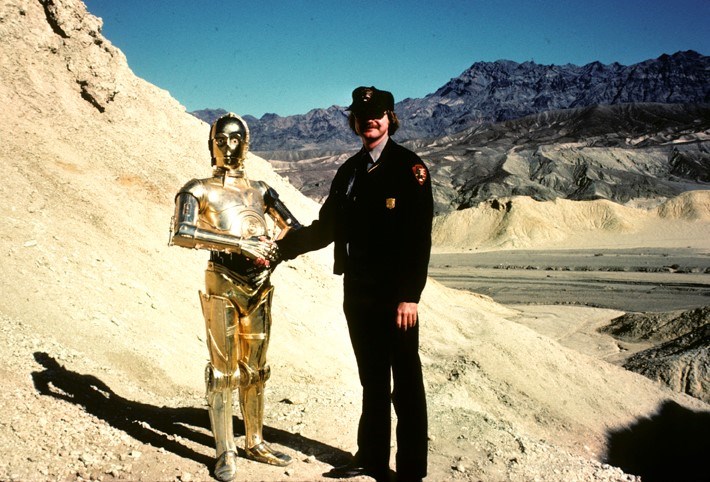
NPS Photo
Written by Clare Flynn
The role of national parks in creating iconic backdrops for many of the most popular films in history is well documented. From the use of Death Valley and Redwood National Park in the original Star Wars trilogy to Arches National Park in Indiana Jones and the Last Crusade or Canyonlands in Thelma and Louise, our national parks have doubled as some of the most famous settings in cinema history. What may not be as well known is that National Park Service sites have been a part of filmmaking since motion pictures were first invented in the late 19th century.
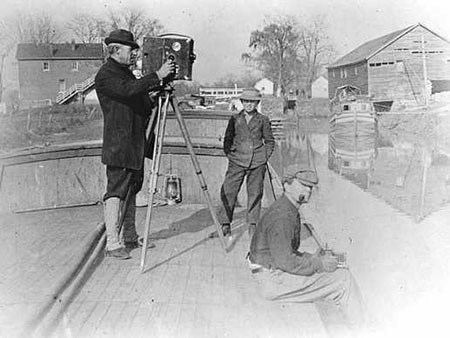
NPS Photo, Harpers Ferry Center HPC-001899
Filming “on location” has been a part of the film industry from the very beginning. Because early motion picture technology required ample natural sunlight, the first films were shot in sunlit studios or outdoors. Most were “actualities,” or non-fiction films that documented notable individuals or events or captured scenes from everyday life, such as workers leaving a factory or a train rushing past the screen, as a means of aweing audiences with the new technology’s ability to accurately reproduce reality.
“Travelogues” that captured scenic views of breathtaking, far away places, many of which are now part of the National Park Service, were also popular.
Thomas Edison in the Studio
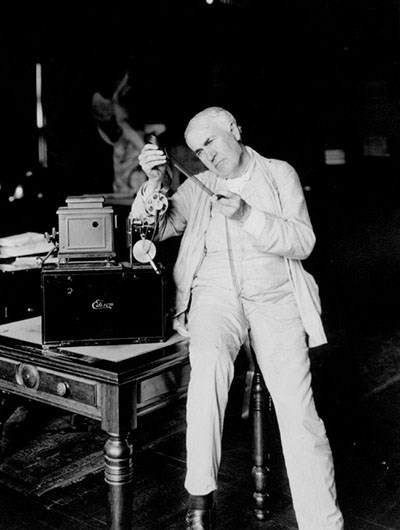
NPS Photo
The grounds of Edison’s laboratory were also home to the world’s first motion picture production studio, a peculiar structure covered in black tar paper known as the Black Maria. Originally constructed in 1893, the studio had a retractable roof and was built so that the entire structure could be rotated to capture as much natural light as possible as the sun moved across the sky throughout the day.
The Black Maria


Left image
The Black Maria, circa 1894
Credit: (public domain)
Right image
A replica of the Black Maria at Thomas Edison NHP
Credit: (NPS Photo)
Around 1910, film companies began to send teams to Los Angeles, California to take advantage of the abundance of sunshine and dry weather during the winter months. By 1914, much of the film community had moved to the city, transforming it into the global hub of the film industry. The centralization of the film industry in Los Angeles ushered in the rise of the studio system in the 1920s and the beginning of a period known as the “Golden Age of Hollywood.”
During this era, the most powerful film companies, known as “the Majors,” became vertically integrated entities that controlled all aspects of the industry, including production, distribution, and exhibition. Motion pictures were primarily filmed on purpose-built sets in studios and soundstages that were erected in the film companies’ Los Angeles backlots. On these studio sets, the companies had full control over the cast, crew, and creative team, as well as the look and feel of the final product.
Paramount Ranch
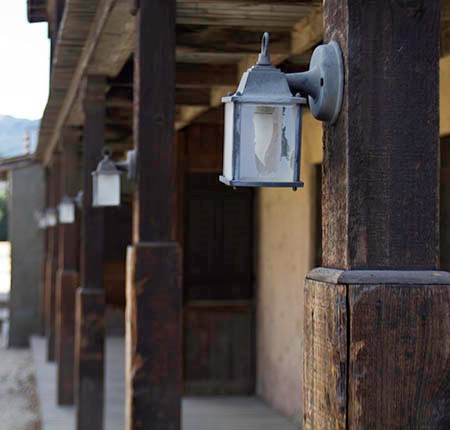
NPS Photo
Paramount Ranch, now part of the Santa Monica Mountains National Recreation Area, was purchased by Paramount Pictures in 1927 to serve as a “movie ranch,” where the 2,700 acres of diverse landscape could be transformed into almost any setting the filmmakers could imagine. In 1953, a Western town was created to facilitate the production of film and TV “Westerns.” The ranch remains a popular filming location today. Recent acclaimed productions that have filmed at the ranch include the 2008 Oscar-nominated motion picture American Sniper and the HBO television series Westworld.
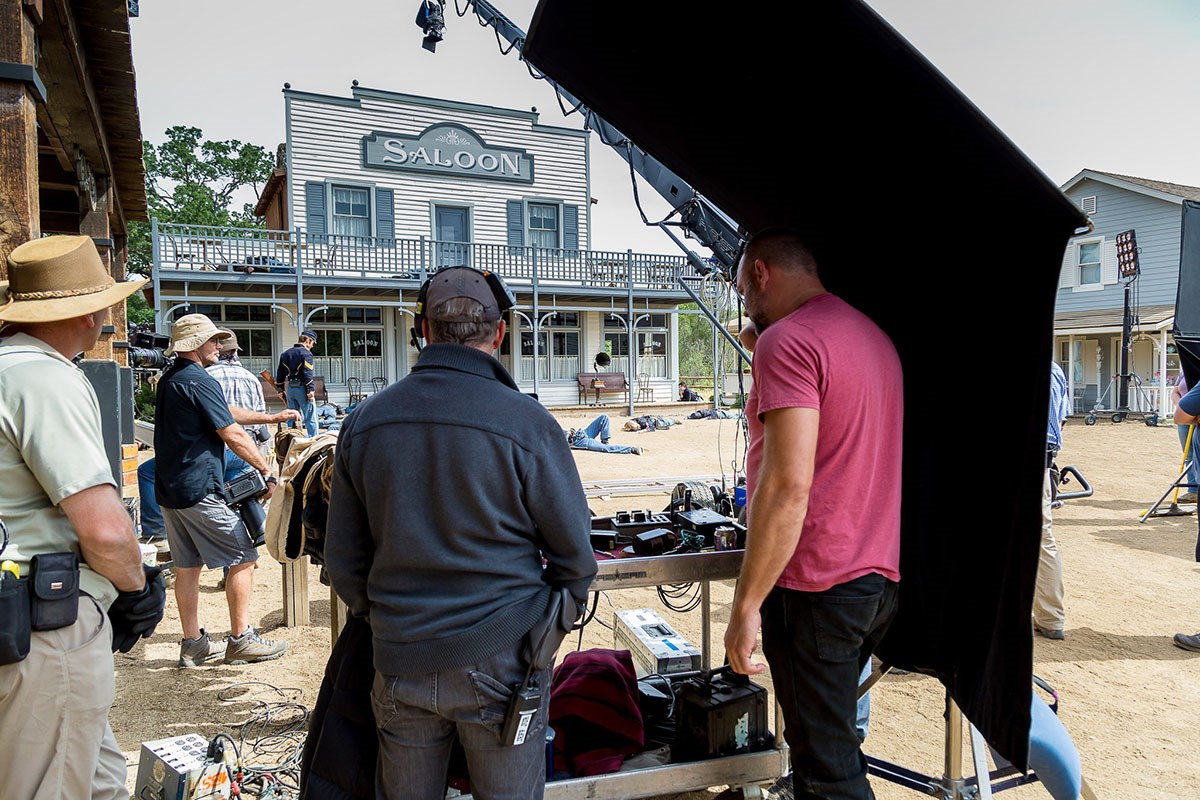
NPS Photo
Filming on sets in Los Angeles backlots remained the dominant industry practice until World War II. After the war, film companies began to shift toward location filming as a way to cut costs in the uncertain post-war economic climate and access international box office funds that had been frozen by European governments to control the outflow of U.S. dollars. In the ensuing decades, location filming was also used to combat the rise of commercial television and the resulting drop in movie audiences.
New widescreen technologies were introduced, which highlighted the spectacle of grand real-life locations with near-panoramic eyewitness vistas, allowing film companies to indulge audiences’ growing interest in international travel while also creating products that could attract lucrative, new audiences worldwide. Location filming also appealed to fluctuating audience demands for realism in film, which had initially been spurred by the exposure to wartime documentaries during World War II and was later revived by the Neo-Realism and New Wave movements in the 1960s and 1970s.
Given the importance of location filming throughout motion picture history, perhaps it should come as no surprise that the National Park Service, with more than 400 of the country’s most naturally and culturally significant sites in its care, has been part of the story of film from its inception. With the proliferation of internet streaming platforms and high-budget television series giving rise to the current “Golden Age of Television,” this appears to be one story with no end in sight.
If you want to read more about the intersection between historic preservation and film production, find a summary of Clare's research in her blog contribution for the National Trust for Historic Preservation: The Heritage Film Set: A UK Perspective on Caring for Historic Filming Locations.
More about Cultural Landscapes


